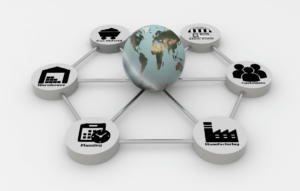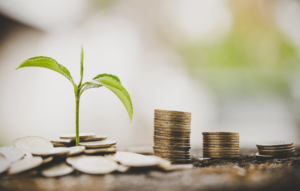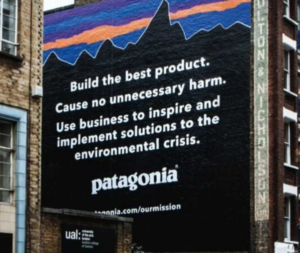In today’s rapidly evolving business landscape, the concept of “green business development” is becoming less of a marketing tagline and more of a necessity. As climate change and environmental degradation continue to pose significant threats, businesses are increasingly recognizing the need to adopt more sustainable practices. Green business development isn’t just a trend; it’s a crucial shift towards a more sustainable and responsible way of operating in the modern world.
Sustainability in business not only benefits the environment but also inherently drives economic growth, builds brand reputation, and fosters long-term resilience. From resource efficiency and eco-friendly product design to sustainable supply chain management and waste reduction, green business practices are transforming industries across the globe.
This blog will look into the core principles of green business development, explore key strategies for implementing sustainable practices, and highlight the benefits of going green. We will also examine real-world examples of successful green businesses and discuss the challenges and future trends in this vital field. Join us on this journey to discover how green business development can pave the way to a more sustainable and prosperous future.
Understanding Green Business Development
Green business development refers to the process of creating and growing businesses with a focus on sustainability and environmental responsibility. This involves integrating eco-friendly practices into every aspect of the business, from production and operations to marketing and supply chain management. The goal is to minimize negative environmental impacts while maximizing economic and social benefits.
Key principles of green business development include:
- Sustainable Resource Management: Efficient use of natural resources and adoption of renewable energy sources.
- Eco-Friendly Product Design: Designing products with minimal environmental impact, considering the entire lifecycle from production to disposal.

- Green Supply Chain Management: Ensuring sustainability throughout the supply chain, from sourcing raw materials to delivering finished products.
- Waste Reduction and Recycling: Implementing zero-waste policies and promoting recycling and upcycling initiatives.
- Corporate Social Responsibility (CSR): Integrating CSR into business models, engaging with communities, and promoting environmental stewardship.
The Importance of Green Business
Green business development is crucial for several reasons. Environmentally, it helps reduce pollution, conserve natural resources, and mitigate climate change. Socially and economically, green business practices create jobs, foster innovation, and promote public health and well-being.
As businesses increasingly embrace sustainability, they not only contribute to environmental protection but also enhance their competitiveness and resilience in a rapidly changing world. By adopting green practices, companies can build stronger relationships with consumers, investors, and communities, ultimately driving long-term success for everyone involved.
Key Strategies for Green Business Development
Sustainable Resource Management
Effective management of natural resources is a cornerstone of green business development. This involves using resources more efficiently and adopting renewable energy sources when applicable. Businesses can achieve this by investing in energy-efficient technologies, implementing water-saving practices, and reducing raw material consumption. By prioritizing sustainability, companies can lower their operational costs and simultaneously minimize their environmental footprint.
Eco-Friendly Product Design
Designing products with minimal environmental impact is another crucial strategy. This approach, often referred to as eco-design, considers the entire lifecycle of a product, from raw material extraction to end-of-life disposal. Companies can adopt practices such as using biodegradable materials, reducing packaging, and designing for durability and recyclability. By creating eco-friendly products, businesses can meet the growing consumer demand for sustainable options and differentiate themselves in the market.
Green Supply Chain Management
True sustainability must extend beyond a company’s internal operations to its entire supply chain. Green supply chain management involves sourcing materials responsibly, reducing carbon emissions in transportation, and collaborating with suppliers who adhere to sustainable practices. This holistic approach ensures that environmental considerations are integrated into every stage of the supply chain, providing a sustainable foundation for business ecosystems.

Waste Reduction and Recycling
Implementing zero-waste policies and promoting recycling and upcycling initiatives are effective strategies for reducing waste. Businesses can conduct waste audits to identify areas for improvement, set reduction targets, and educate employees on waste management practices. By reducing waste, companies tend to save on disposal costs, potentially generate additional revenue streams through recycling, and ultimately contribute to a circular economy.
Corporate Social Responsibility (CSR)
Corporate Social Responsibility (CSR) involves integrating social and environmental concerns into business operations and interactions with stakeholders. This can include initiatives such as community engagement, environmental conservation projects, and ethical labor practices. By embracing CSR, companies not only enhance their brand reputation but also contribute to societal well-being and environmental sustainability.
Implementing these strategies not only helps businesses reduce their environmental impact but also naturally drives innovation, increases efficiency, and builds a positive brand image. By adopting sustainable practices, companies can position themselves as leaders in the green business movement and contribute to a more sustainable future.
Benefits of Green Business Development
Economic Advantages
One of the most compelling reasons for businesses to adopt green practices is the economic benefits they offer. By focusing on energy efficiency, waste reduction, and sustainable resource management, companies can significantly lower their operational costs. For instance, using renewable energy sources such as solar or wind power can reduce electricity bills, while efficient waste management practices can cut down on disposal costs. Additionally, businesses that prioritize sustainability often gain access to new markets and customer segments that are willing to pay a premium for eco-friendly products and services.
power can reduce electricity bills, while efficient waste management practices can cut down on disposal costs. Additionally, businesses that prioritize sustainability often gain access to new markets and customer segments that are willing to pay a premium for eco-friendly products and services.
Enhanced Brand Reputation
In today’s market, consumers are increasingly valuing corporate responsibility and sustainability. Businesses that adopt green practices can build a strong, positive brand image, fostering trust and loyalty among consumers. A commitment to environmental sustainability also differentiates a company from its competitors, making it more attractive to both customers and investors. By demonstrating their dedication to protecting the planet, companies can enhance their brand reputation and enjoy increased customer engagement and retention.
Regulatory and Compliance Benefits
As environmental regulations become more stringent, businesses that proactively adopt green practices can stay ahead of compliance requirements. By aligning their operations with current and anticipated regulations, companies can avoid potential fines and legal issues. Additionally, governments and regulatory bodies often provide incentives, grants, and subsidies to businesses that implement sustainable practices. These financial benefits can help offset the initial costs of adopting green technologies and practices, further enhancing the economic viability of sustainability initiatives.
Long-Term Sustainability
Green business practices are not just about immediate benefits; they also ensure long-term sustainability and resilience. By reducing dependency on finite resources and mitigating environmental risks, businesses can safeguard their operations against future challenges. Sustainable practices promote resource efficiency, innovation, and adaptability, ensuring that companies can thrive in a rapidly changing world. Moreover, by contributing to global environmental goals, such as reducing carbon emissions and conserving biodiversity, businesses can play a crucial role in creating a sustainable future for all.
In summary, green business development offers a multitude of benefits that extend beyond environmental protection. Economic savings, enhanced brand reputation, regulatory compliance, and long-term sustainability are just a few of the advantages that businesses can enjoy by adopting sustainable practices. These benefits not only drive business success but also contribute to the well-being of society and the planet.
Challenges in Green Business Development
Initial Costs and Investments
One of the primary challenges businesses face when adopting green practices is the initial cost. Investing in renewable energy, sustainable materials, and eco-friendly technologies can require significant upfront capital. While these investments often lead to long-term savings, the initial expense can be a barrier for many companies, particularly small and medium-sized enterprises (SMEs). To overcome this, businesses can seek out grants, subsidies, and low-interest loans designed to support sustainable initiatives. Additionally, demonstrating the long-term economic benefits and return on investment (ROI) of green practices can help secure internal and external funding.

Changing Consumer Behavior
Another challenge lies in shifting consumer behavior towards more sustainable choices. While awareness of environmental issues is growing, there is definitely still a gap between consumer intentions and actions. Educating consumers about the benefits of green products and services is essential for driving demand. Businesses can leverage marketing strategies that highlight the environmental and health benefits of their offerings, and use certifications and labels to build trust. Collaborating with influencers and launching awareness campaigns can also help change consumer perceptions and encourage more sustainable purchasing decisions.
Supply Chain Complexity
Ensuring sustainability throughout the supply chain can be a complex and challenging task – most of our modern systems are simply not built with sustainability in mind. Businesses have to work closely with suppliers to ensure that raw materials are sourced responsibly and that sustainable practices are upheld at every stage of production. This can involve rigorous auditing, certification processes, and long-term partnerships with suppliers who share the same commitment to sustainability. Addressing supply chain complexity requires transparency, effective communication, and a willingness to invest in building sustainable supply chain networks.
Case Studies of Successful Green Businesses
Patagonia

Patagonia is a leading example of a company that has successfully integrated sustainability into its business model. Known for its high-quality outdoor apparel, Patagonia has committed to using recycled materials, reducing carbon emissions, and supporting environmental causes. The company donates 1% of its sales to environmental nonprofits and actively engages in campaigns to protect natural habitats. Patagonia’s dedication to sustainability has earned it a loyal customer base and a reputation as a pioneer in green business practices.
Tesla
Tesla has revolutionized the automotive industry by making electric vehicles (EVs)

mainstream. The company’s mission to accelerate the world’s transition to sustainable energy extends beyond its innovative EVs to include solar energy solutions and energy storage products. By focusing on renewable energy and reducing reliance on fossil fuels, Tesla has positioned itself as a leader in green technology. Tesla’s success demonstrates how businesses can drive significant environmental impact while achieving substantial economic growth.
IKEA

IKEA, the global furniture retailer, has made significant strides in sustainability through its People & Planet Positive strategy. The company aims to become climate positive by 2030 by reducing more greenhouse gas emissions than its value chain emits. IKEA focuses on sustainable sourcing, energy efficiency, and waste reduction. For example, it has invested in renewable energy with the goal of producing more renewable energy than it consumes. IKEA’s commitment to sustainability has done a lot to enhance its brand reputation and attract environmentally conscious consumers.
These case studies illustrate how businesses across different industries can successfully implement green practices. By prioritizing sustainability, these companies have not only reduced their environmental impact but also achieved economic success and built strong brand identities.
Future Trends in Green Business Development
Emerging Technologies
Emerging technologies are playing a crucial role in advancing green business practices. Innovations such as artificial intelligence (AI) and the Internet of Things (IoT) are helping companies optimize energy use, reduce waste, and improve supply chain efficiency. Green manufacturing technologies are enabling businesses to produce goods with lower environmental impact. For example, 3D printing reduces material waste, while advancements in renewable energy technology make it easier and more cost-effective for businesses to switch to sustainable power sources.
Policy and Regulation Changes
Governments worldwide are increasingly implementing policies and regulations aimed at promoting sustainability. Businesses must stay informed about these changes to ensure compliance and take advantage of potential incentives. Regulations may include stricter emissions standards, requirements for sustainable sourcing, and incentives for adopting renewable energy. Staying ahead of policy changes not only helps businesses avoid penalties but also positions them as leaders in sustainability.
Consumer Trends
Consumer demand for sustainable products is on the rise, driven by increased awareness of environmental issues. Millennials and Generation Z, in particular, are prioritizing sustainability in their purchasing decisions. Businesses need to respond to this shift by offering eco-friendly products and transparent information about their sustainability practices. Emphasizing the environmental benefits of products and obtaining certifications can help attract and retain these environmentally conscious consumers.
Final Thoughts
Green business development is not just a trend; it’s a necessary shift towards a more sustainable and responsible way of operating. By adopting sustainable practices, businesses can significantly reduce their environmental impact, enhance their brand reputation, and enjoy long-term economic benefits.
The strategies for green business development, including sustainable resource management, eco-friendly product design, green supply chain management, waste reduction, and corporate social responsibility, provide a comprehensive roadmap for businesses looking to embrace sustainability. While there are challenges, such as initial costs and changing consumer behavior, the benefits far outweigh the obstacles.
Real-world examples like Patagonia, Tesla, and IKEA demonstrate that it is possible to achieve economic success while prioritizing sustainability. These companies have set a benchmark for others to follow, showing that green business practices can lead to innovation, efficiency, and a strong market position.
Looking ahead, emerging technologies, evolving policies, and changing consumer trends will continue to shape the future of green business development. By staying informed and proactive, businesses can leverage these trends to further their sustainability goals and contribute to a healthier planet.
In conclusion, green business development is a powerful strategy for building a sustainable future. By integrating eco-friendly practices into their operations, businesses can not only protect the environment but also drive economic growth and create lasting value for their stakeholders. It’s time for businesses to take the lead in this movement and pave the way for a sustainable, prosperous future.









